Hard to See and They Usually Last Only for a Few Seconds; What Are They?
The Streak Continues: 265
This blog was published just before 4:30am from my Mom’s home at Holbrook, Long Island, NY. It took me about 2 1/2 hours to assemble this post which makes 265 consecutive days with a brand new blog post. I am in NY for a week of visiting my elderly (gonna be 92 soon) Mom, my younger sister Arna, my younger daughter Alissa and her wonderful family, and doing some late summer bird photography.
As always, I would appreciate your using the BIRDS AS ART B&H affiliate links for all of your major gear, video, and electronic purchases, using our Amazon logo-link for all of your household purchases, and visiting the BAA Online Store for your tripod, tripod head, LensCoat, miscellaneous, accessories, and eGuide purchases as well.
JBWR and Nickerson Beach Short-Notice In-the-field Workshops and a Possible IPT 🙂
Scroll down for info on both.
Your Help Is Needed
Sales for the first half of August, 2014 via our BIRDS AS ART B&H affiliate links have been microscopically abysmal at best. If you need to purchase some new camera gear, please remember to use either our B&H logo link below or one of the product-specific links in the blog or the Bulletins. All should feel free to write me via e-mail
|
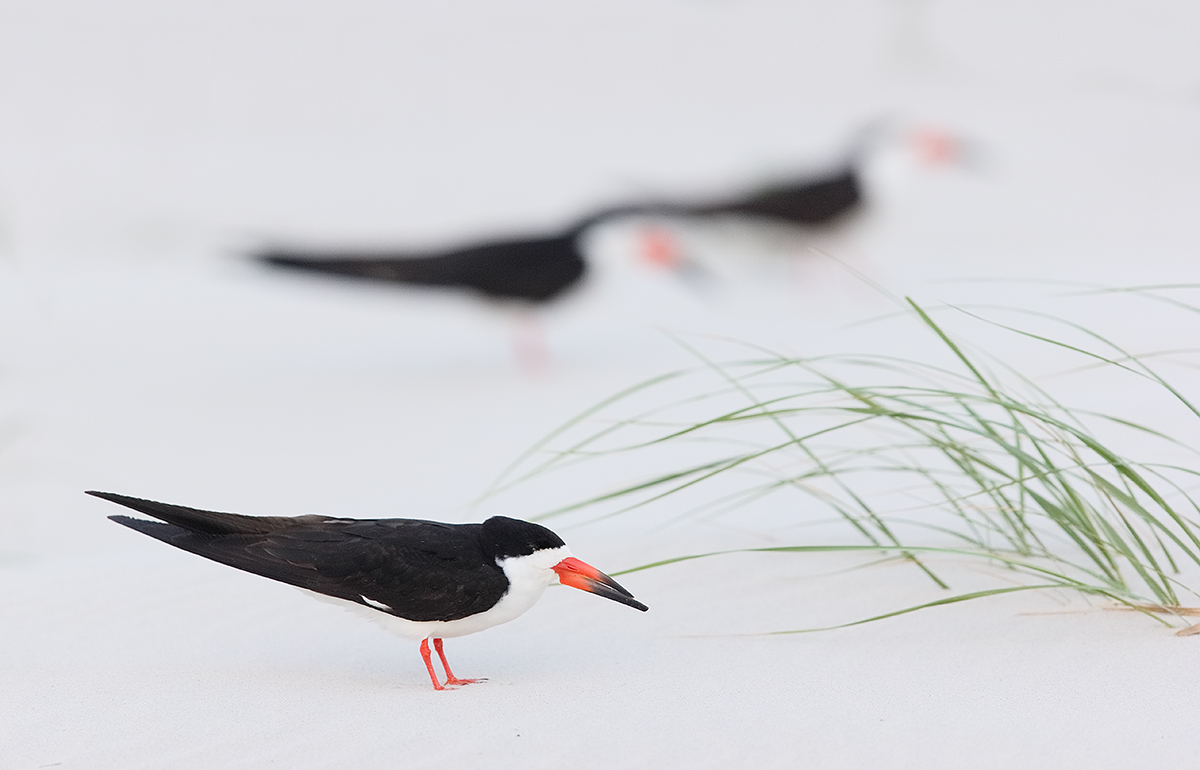
|
|
This image was created on last July’s Nickerson Beach IPT late on our last afternoon with the Gitzo 3532 LS carbon fiber tripod, Mongoose M3.6 head, the Canon EF 600mm f/4L IS II USM lens and the Canon EOS-1D X Digital SLR camera. ISO 2500 (with ISO Safety Shift). Evaluative metering +2 1/3 stops off the pure white sand: 1/800 sec. at f/4 in Manual mode.
Central Sensor/AI Servo/Surround Rear Focus AF on the face of the closest bird and re-compose. Click here if you missed the Rear Focus Tutorial. Click on the image to see a larger version.
Image #1: Skimmer Watercolor
|
|
Hard to See and They Usually Last Only for a Few Seconds; What Are They?
Pleasing Juxtapositions
When the stars align perfectly and your creative eye is searching the chaos, there are times when the competent photographer can spot a pleasing arrangement or juxtaposition of two or more compositional elements. As these elements are often either birds or animals such pleasing arrangements often last only a few seconds at most. Some are there for one second… If you are not photographing something great, the trick is to keep your eyes moving–that a lot easier to do in soft light or cloudy conditions as you are not limited to looking only right down sun angle–and let your creative vision run free. At times, you might need to change your position to bring the arrangement into harmony. When using telephoto lenses think of seeing the world in small rectangular boxes…. The skimmers in this image were actually parked in the same spot for well more than a few minutes. When I showed this image to Greg Gulbransen on the rear LCD of my 1D X, he exclaimed, “That’s great.” Where did you see it?” “Right there in front of you” I answered. “Just take one big step to your right and you will see it materialize.” And he did. Pleasing juxtapositions are where you see them.
|
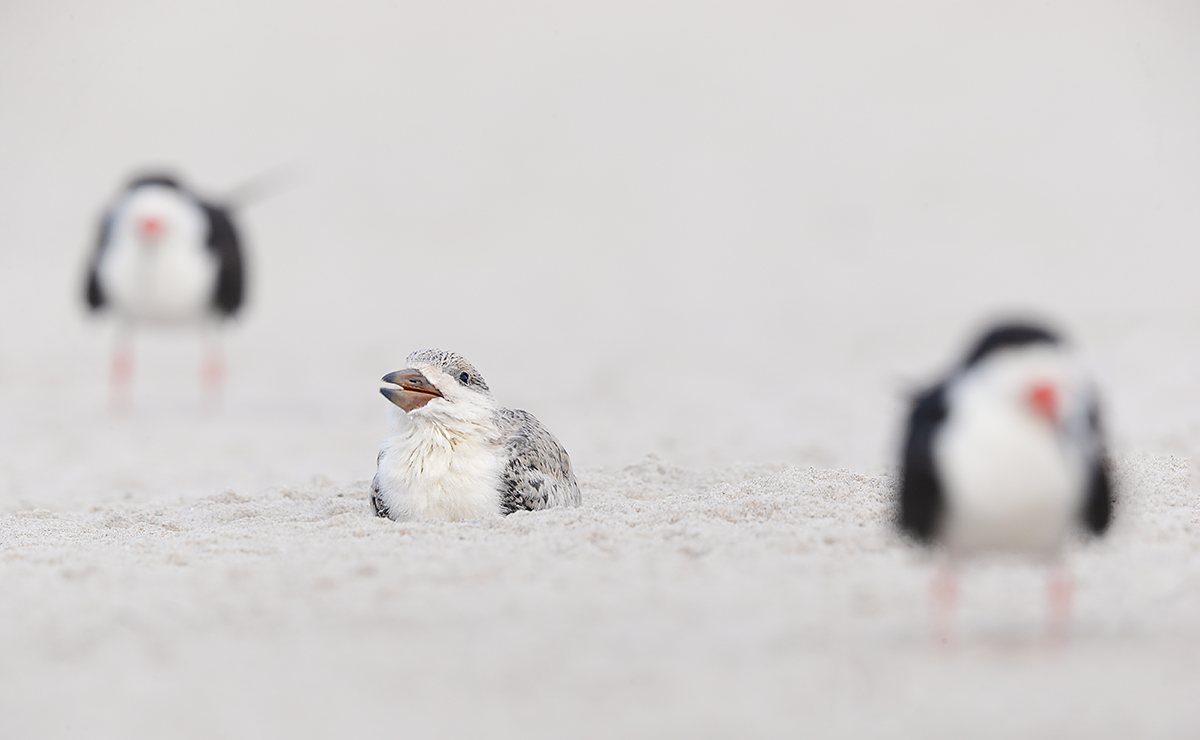
|
|
This image was created at 7:38am yesterday (August 21, 2014) morning with a large cloud covering the sun. I used the Gitzo 3532 LS carbon fiber tripod, the Mongoose M3.6 head, the Canon EF 600mm f/4L IS II USM lens, the Canon Extender EF 2X III, and the Canon EOS-1D X. ISO 800. Evaluative metering +2 stops as framed: 1/320 sec. at f/10 in Manual mode.
Central Sensor (by necessity)/AI Servo-Expand/Rear Focus AF on the face of the chick and re-compose. When you add the 2X TC to an f/4 lens with the 1DX or the 5D III hit the MFn button once to toggle to AF Expand and enjoy 4 extra AF sensors. Learn everything there is to know about the 1D X and 5D III AF systems including how to manage the various AF Area Selection Modes, when to use which one, and several ways to move the AF sensor around in the 1D X AF Guide and the 5D Mark III User’s Guide. Click here to see the latest version of the Rear Focus Tutorial. Click on the image to see a larger version. .
Image #2: Skimmer Chick Sentinels
s
|
Where Do You Focus?
The general but nearly universal rule is to focus on the closest subject. But like all rules I encourage folks to break them but only when they can verbalize a reason for doing so. Here I said to myself, that chick is a lot cuter than either of the adults so I went to work with rear focus and was just able to fit the two sentinels into the frame. I saw this nice juxtaposition but there were other birds in the frame ruining the image. Thankfully the extraneous birds walked out of the scene. I made three images and then the chick got up and ran away.
|
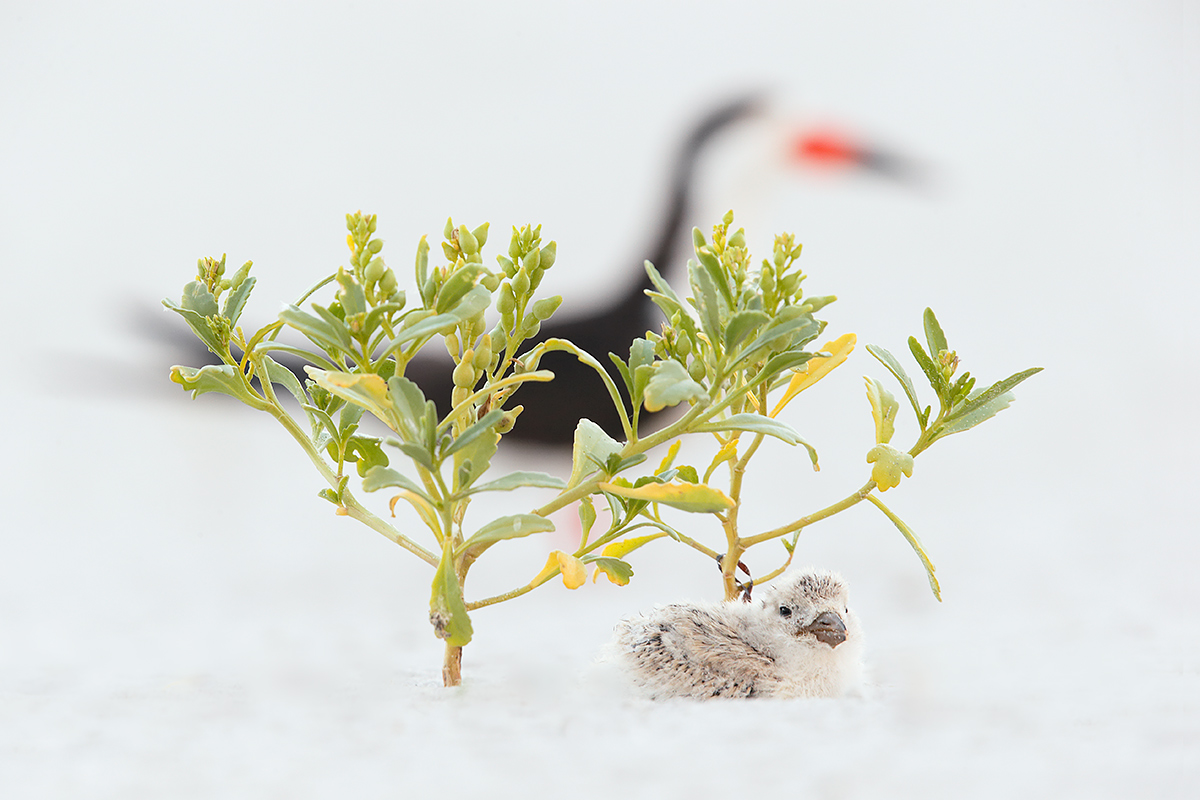
|
|
This image was also created yesterday morning with in similar conditions to the first image but earlier, at 7:16am. Again I used the Gitzo 3532 LS carbon fiber tripod, the Mongoose M3.6 head, the Canon EF 600mm f/4L IS II USM lens, the Canon Extender EF 2X III, and the Canon EOS-1D X. ISO 1250. Evaluative metering +2 stops off the pure white sand: 1/125 sec. at f/10 in Manual mode.
Central Sensor (by necessity)/AI Servo-Expand/Rear Focus AF on the face of the chick and re-compose. When you add the 2X TC to an f/4 lens with the 1DX or the 5D III hit the MFn button once to toggle to AF Expand and enjoy 4 extra AF sensors. Learn everything there is to know about the 1D X and 5D III AF systems including how to manage the various AF Area Selection Modes, when to use which one, and several ways to move the AF sensor around in the 1D X AF Guide and the 5D Mark III User’s Guide. Click here to see the latest version of the Rear Focus Tutorial. Click on the image to see a larger version. .
Image #3: Serendipitous Skimmer Arrangement
s
|
Wishing and hoping and thinking and praying and planning and dreaming…
With apologies to Dusty Springfield (here), Wishin’ and hopin’ and thinkin’ and prayin,’Plannin’ and dreamin’ might not get you into his or her arms but they can all help when you spot a juxtaposition with potential. First I spotted the chick sleeping in front of the sea rocket. It made a nice juxtaposition with the tiny skimmer on the right looking out of the frame with the vegetation behind it. But the bird was sleeping with its head on the sand and its eyes closed. So I started wishing and hoping and praying that the chick would wake up. It did. But the image was ruined by several adults in the background, each in the wrong spot. I planned on most of them walking away and dreamed that one of them would wind up in the perfect position behind the beach plant with its head held high. Thanks Dusty!
Your Favortie?
Which of the three images here do you think is the strongest? Be sure to let us know why.
|
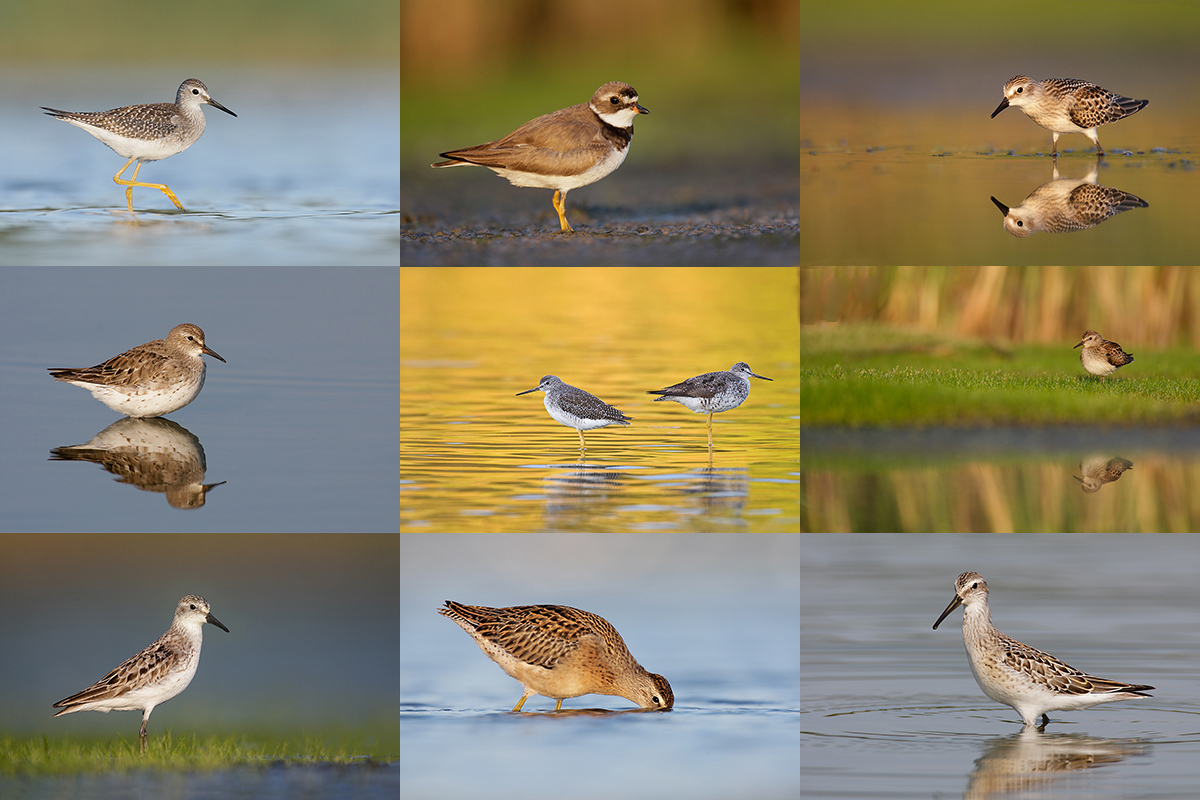
|
|
For me, the coolest thing about learning to identify shorebirds is that once you learn the basics it is actually easier to age a shorebird, that is, to tell if it an adult or a juvenile, than it is to identify it as to species. And with a bit of experience, study, and practice, identifying the common North American migrant shorebirds is nowhere as difficult as it is reputed to be. Advice: get yourself a copy of my Shorebirds: Beautiful Beachcombers, study, and get out to local ponds, estuaries, beaches, and mudflats as much as possible for the next month. Mid-August through early September is the best time of year to see both adult and fresh juvenile shorebirds together on migration. Better yet, join me at JBWR for two great mornings of shorebird photography while honing your identification and ageing skills and learning a ton about my favorite bird family. See below for details.
For the correct ageing and ID of each of the birds in the composite above, see the comments here.
|
JBWR Short-Notice Shorebird Photography and ID In-the-Field Morning Workshop Session
Sunday August 24: sunrise till 10am followed by brunch and image review at a local diner: $299. Limit 6.
Join me at Jamaica Bay Wildlife Refuge in Queens, NY this coming Sunday a morning of shorebird photography in the mud. You will learn to age and identify the common shorebirds that we will encounter. You will learn the best times, tides, and locations to visit for the very best shorebird photography on the east coast and why only a very few days each year offer the best chances for success. I will teach you how to get close; we will either be sitting in or lying on the hard mud. This morning session offers you a chance to learn from someone who has spent more time studying and photographing the shorebirds of JBWR than anyone alive. Join me and you are invited to pick my brain; as is usual, I will share everything that I know. Some folks may wish to join me for a JBWR/Nickerson Beach double header. See below for Nickerson Beach details.
If you call Jim on Friday, payment in full is due when you register and is non-refundable. Otherwise it will be cash on the barrelhead on Sunday morning. Call Jim today at 863-692-0906 with a credit card in hand to register or leave a message on my cell at 863-221-2372. Please print, complete, and sign the form that is linked to here and shoot us a scanned copy via e-mail or bring a hard copy with you.
Nickerson Beach Short-notice Weekday Beach-nesting Birds IPT: 2-Full Days/August 25-26, 2014: $649 with the late registration discount. Leader: Arthur Morris
Or do one morning for $299 with lunch and image review or one afternoon for $249.
Join me on Long Island, NY soon to photograph Black Skimmers with chicks and young of all sizes, adult and juvenile Common Terns, and American Oystercatchers with grown young. The skimmers will be the stars of the show. Mid- to late August is prime time for photographing young skimmers. Chances are great to witness Great Black-backed Gull predation. The will also be chances to photograph a variety of shorebird species including large flocks of southbound migrant Sanderlings. Car-pooling is recommended; if we opt to return to the beach before 5pm there is a $30/vehicle parking fee that is not included so it is best to share that expense. Parking in the morning is free.
If you call Jim on Friday, payment in full is due when you register and is non-refundable. Otherwise it will be cash on the barrelhead on Sunday morning. Call Jim today at 863-692-0906 with a credit card in hand to register or leave a message on my cell at 863-221-2372 and e-mail me as well. Please print, complete, and sign the form that is linked to here and shoot us a scanned copy via e-mail or bring a hard copy with you.
If you have any questions please feel free to contact me via e-mail or by phone this weekend at 863-221-2372 and leave a message.
Facebook
Be sure to like and follow BAA on Facebook by clicking on the logo link upper right. Tanks a stack!
Support the BAA Blog. Support the BAA Bulletins: Shop B&H here!
We want and need to keep providing you with the latest free information, photography and Photoshop lessons, and all manner of related information. Show your appreciation by making your purchases immediately after clicking on any of our B&H or Amazon Affiliate links in this blog post. Remember, B&H ain’t just photography!
…..
Amazon.com
Those who prefer to support BAA by shopping with Amazon may use this link:
Amazon Canada
Many kind folks from north of the border, ay, have e-mailed stating that they would love to help us out by using one of our affiliate links but that living in Canada and doing so presents numerous problems. Now, they can help us out by using our Amazon Canada affiliate link by starting their searches by clicking here. Many thanks to those who have written.
Typos
In all blog posts and Bulletins, feel free to e-mail or to leave a comment regarding any typos, wrong words, misspellings, omissions, or grammatical errors. Just be right. 🙂





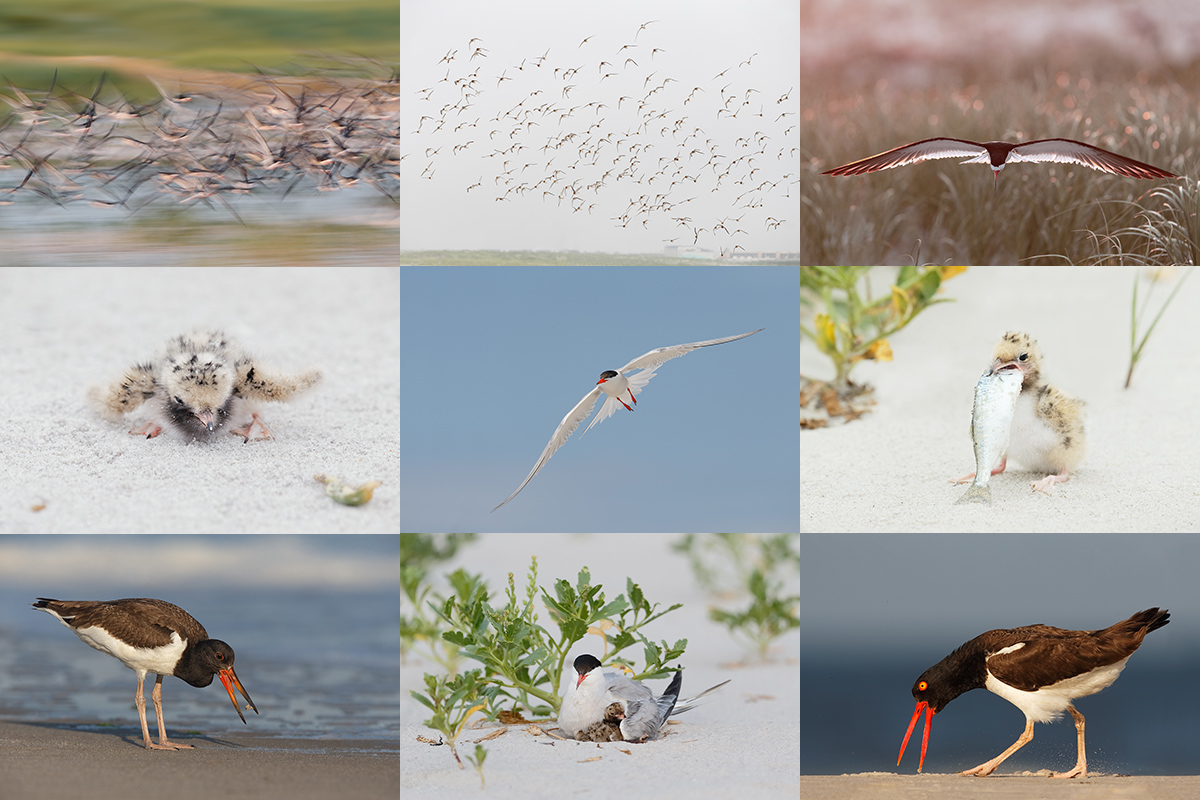













The last image is very powerful!
And thank you for the gift of your knowledge. I’ve been reading your bulletins and blog for half a dozen years now and each post is always appreciated. 🙂
Hey Scott, Many thanks for your more than kind words. Please remember to use our affiliate links. Best and great picture making. artie
#3 is my favorite though I love them all. I agree that the story telling element in #3 is superb. Well done Artie!
Thank you Mr. Dave. Tomorrow will be your big day :). a
Image #3 When I first glanced at image #3 my eyes missed the chick, and then I quickly saw it,
the image became that much more interesting and is my favourite, by far!!
Thank you sir. Glad that you kept looking 🙂 a
Hands down, #3! When I grow up…
🙂 🙂 and thanks.
Absolutely LOVE the last one. It subtly tells a complete story, and I love incorporating vegetation/habitat.
🙂
My favorites are number 2 and 3. I love the two sentinel birds, as you called them–were they the chick’s parents?–and in number three, the plant and the OOF adult are wonderful compositional and color elements.
Most likely not the parents. The young are all over the place….
#3 for me! Nice images!
Thanks a stack Lady D. arthur